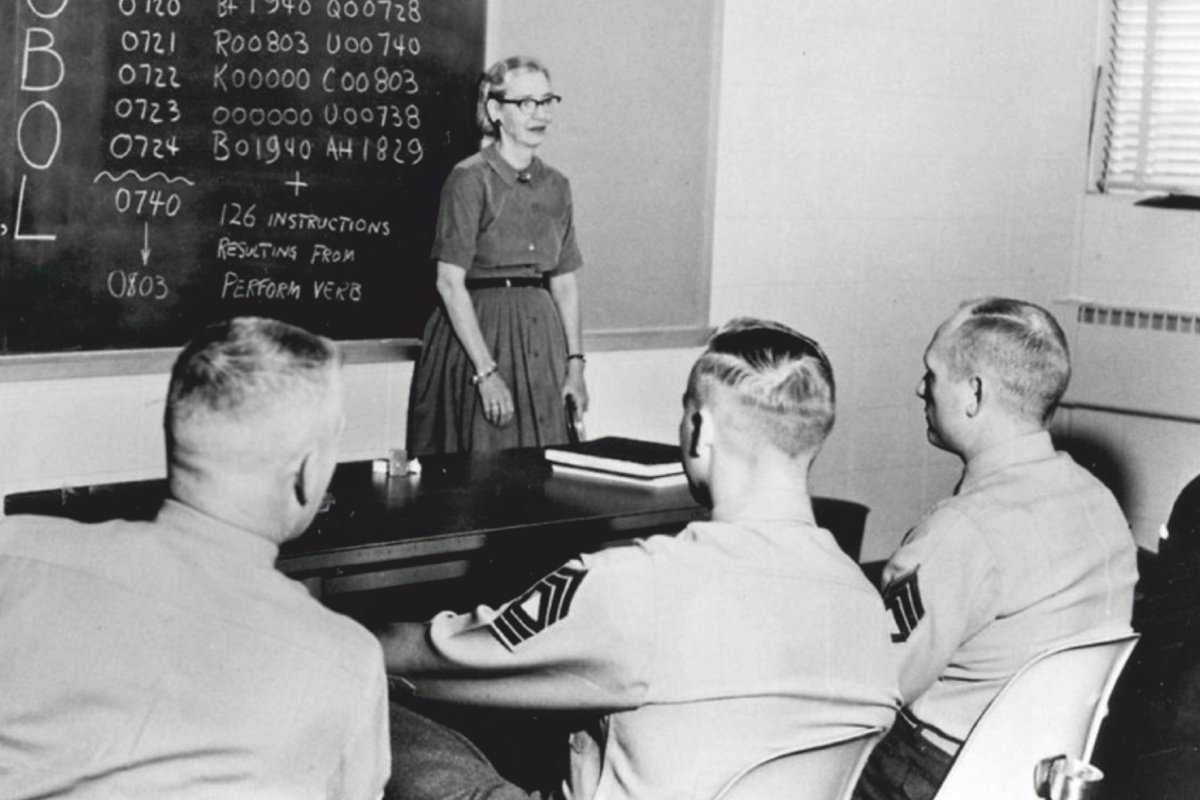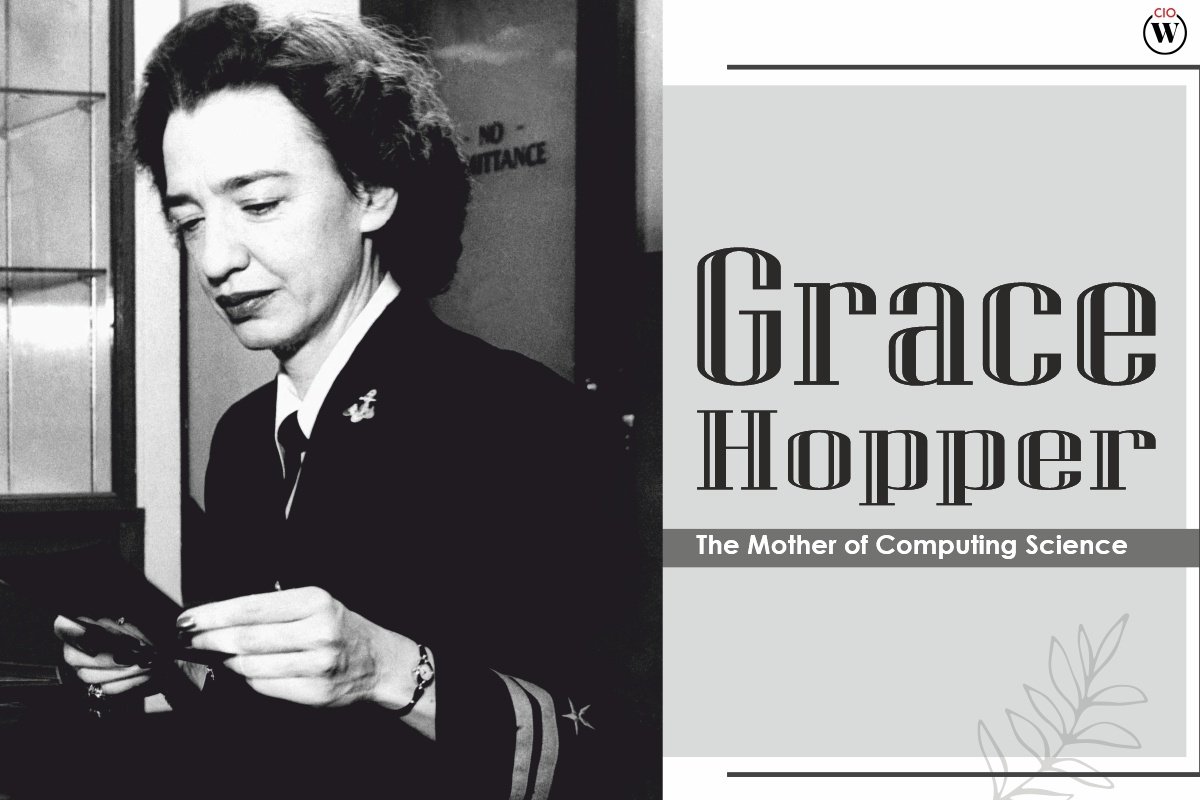Source – Britannica
Grace Hopper, a name synonymous with innovation and trailblazing contributions to computer science, left an indelible mark on the technological landscape of the 20th century and beyond. Her journey from a young mathematics enthusiast to a revered computer scientist is a testament to her tenacity, intellect, and unwavering dedication to advancing the field. This article delves into the life, achievements, and lasting legacy of Grace Hopper, highlighting her early life and education, distinguished military career, groundbreaking contributions to computer science, and the profound impact of her work.
Early Life and Education
Grace Brewster Murray was born on December 9, 1906, in New York City to Walter Fletcher Murray and Mary Campbell Van Horne. From a young age, Grace displayed a keen interest in mathematics and problem-solving, fueled by her supportive family environment. She excelled academically and attended Vassar College, where she earned her bachelor’s degree in mathematics in 1928. Continuing her pursuit of knowledge, Grace went on to obtain her master’s degree in mathematics from Yale University in 1930, followed by a Ph.D. in mathematics from Yale in 1934, becoming one of the few women of her time to achieve such academic heights.
Military Career

Grace Hopper’s illustrious military career began in 1943 when she joined the United States Navy Reserve (WAVES) during World War II. Her initial assignment involved working on the Harvard Mark I computer at Harvard University, where she contributed to the development of one of the earliest programmable digital computers. Recognized for her exceptional abilities, Grace rose through the ranks, eventually achieving the rank of rear admiral—the highest-ranking woman in the U.S. Navy at the time. Throughout her military service, Grace made significant contributions to the field of computing, pioneering advancements in programming languages and software development.
Contributions to Computer Science
Grace Hopper’s influence on computer science is unparalleled, with her groundbreaking work revolutionizing the way we think about programming and software development. One of her most notable achievements was the development of the COBOL (Common Business-Oriented Language) programming language, which became widely adopted for business applications.
COBOL’s user-friendly syntax and compatibility with existing systems made it instrumental in modernizing data processing and business operations. Additionally, Grace is credited with the invention of the compiler, a program that translates high-level programming languages into machine code, making it possible to write programs in human-readable languages.
Interesting Facts about Grace Hopper
1. Grace has been hailed as the ‘Mother of Computing’.
In 1952, she authored the initial computer compiler, a pivotal moment in technological history. Though several individuals contributed to its development, Grace played a central role and was its originator. Prior to compilers, programming code was tailored to specific machines, making distribution and coding arduous. Compilers facilitated the creation of “machine-independent” software, streamlining the writing and utilization of programs across various platforms.
2. Grace received the inaugural Computer Science Person-of-the-Year Award from the Data Processing Management Association.
Recognized as “Amazing Grace,” she stood as one of the pioneering female admirals in the Navy. Hopper’s remarkable achievements, tireless work ethic, and visionary philosophy earned her this endearing nickname. Apart from pioneering the first compiler, she contributed to the creation of COBOL, a significant programming language, and played a pivotal role in standardizing military computers and simplifying access to databases.

3. Hopper is Rumored to Have Coined the Term ‘Debugging’
According to the story, Grace and her colleagues discovered a moth inside a computer they were working on. This incident amused them as they had found a “bug” in the system, with the term already in existence. According to Wikipedia, Grace then quipped that they were “debugging” the system.
4. Grace was renowned for her use of ‘nanoseconds’ as a visual aid and her collection of insightful quotes.
You can observe her demonstration on David Letterman’s show in 1986 at the timestamp of 4 minutes and 28 seconds. To access the video, visit the Letterman website. Additionally, here are some of her memorable quotes:
“If you do something once, people will call it an accident. If you do it twice, they call it a coincidence. But do it a third time and you’ve just proven a natural law!”
“Humans are allergic to change. They love to say, ‘We’ve always done it this way.’ I try to fight that. That’s why I have a clock on my wall that runs counter-clockwise.”
5. The U.S. Navy Destroyer USS Hopper is Named After Her.
The USS Hopper (DDG-70) is a guided missile destroyer of the Arleigh Burke-class in the United States Navy, honoring the pioneering computer scientist Rear Admiral Grace Hopper with its name. Hopper is only the second US Navy warship to be named for a woman from the Navy’s own ranks.
Legacy and Impact
Grace Hopper’s legacy extends far beyond her technical innovations, encompassing her role as a mentor, educator, and advocate for diversity in STEM fields. Her pioneering spirit and relentless pursuit of excellence inspired generations of computer scientists, particularly women, to pursue careers in technology.

The Grace Hopper Celebration of Women in Computing, an annual conference named in her honor, continues to serve as a platform for empowering women in tech and celebrating their achievements. Furthermore, Grace’s emphasis on creativity, collaboration, and lifelong learning continues to resonate in the tech community, shaping the way we approach innovation and problem-solving.
Conclusion
Grace Hopper‘s remarkable journey from mathematician to military leader to computer science pioneer exemplifies the transformative power of intellect, perseverance, and innovation. Her contributions to computer science not only revolutionized the field but also paved the way for future generations of technologists to push the boundaries of what is possible. As we reflect on her life and legacy, let us continue to honor Grace Hopper’s legacy by fostering inclusivity, embracing innovation, and inspiring the next generation of trailblazers in technology.









